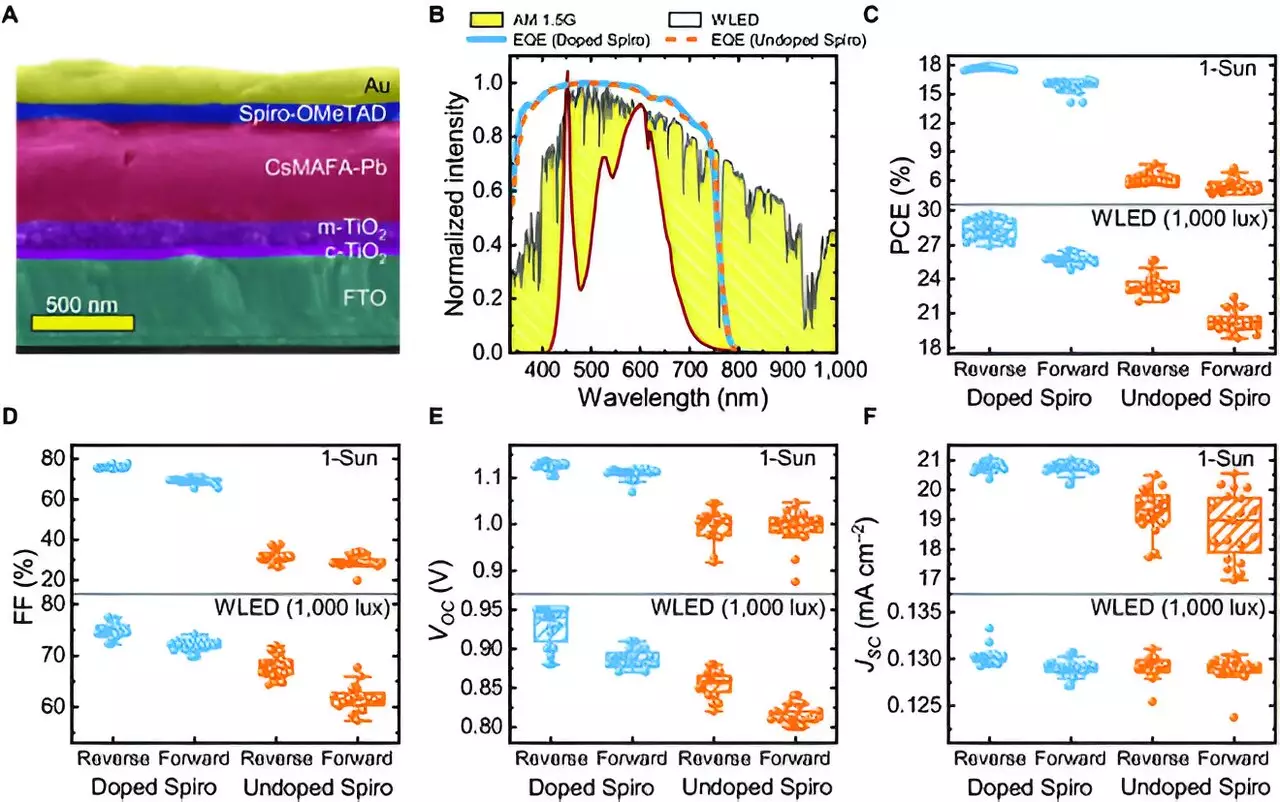Photovoltaic technology has traditionally favored doped materials to achieve peak performance. However, recent research challenges this long-held belief, focusing on the efficacy of undoped Spiro-OMeTAD as a hole-transport material in luminescent, hybrid perovskite (LHP)-based devices. The findings, which indicate a remarkable underutilization of undoped versions, invite a paradigm shift in how we approach indoor photovoltaic systems. The researchers observed, under the right circumstances, that undoped Spiro-OMeTAD performed surprisingly well, achieving efficiencies of 25.6% under 1000 lux illumination—creating elation among researchers confronting the challenges of low-light energy harvesting.
Illumination Levels: An Untapped Potential
The specificity of illumination levels is a critical aspect often overlooked in solar energy research. This study presents data suggesting that undoped versions of the material flourish under low-light conditions, producing results that rival their doped counterparts. Typically, the efficiency of solar cells is traditionally evaluated under standard 1-Sun illumination, but the revelations here highlight that LHP-based devices tailored for indoor environments can provide substantial energy generation, contrary to what one might expect based on standard performance metrics. An oft-ignored factor is the fill factor’s enhancement as light intensity diminishes, where decreased series resistance comes into play, allowing undoped devices to shine in scenarios typically viewed as weak territories for solar technology.
Operational Stability: A Closer Look
One cannot underestimate the importance of operational stability in any solar technology endeavor. In this research, the undoped Spiro-OMeTAD devices demonstrated a 25% increase in maximum power point efficiency under continuous white light. Such resilience signals not just efficiency but a future of reliable performance under fluctuating light conditions that mirrors what indoor technologies typically face. Furthermore, it showcased low hysteresis at dim light levels, reinforcing the undoped device’s reliability. A notable finding was the open-circuit voltage of around 0.65 V at 50 lux; a figure that posits undoped versions as not just a passive alternative, but a robust contender in the realm of solar energy.
Redefining the Solar Energy Landscape
The implications of these findings stretch far beyond mere laboratory success. They stir a conversation regarding the future of indoor photovoltaics, suggesting we may no longer need to scour the chemical landscape for optimal dopants. Instead, researchers can pivot towards refining the photovoltaic structure itself, tailoring it to prevailing lighting dynamics to unlock superior performance. As energy consumption dynamics continue to evolve, especially in urban areas where low-light conditions dominate, the feasibility of such devices repositions them from theoretical discussions to practical applications that are impactful and commercially viable.
The constant pursuit of innovation in photovoltaic technology must adapt to these insights. By prioritizing undoped Spiro-OMeTAD for LHP devices, the solar industry might just uncover an alternative pathway to sustainable energy, pushing the envelope of where and how solar power can be harnessed. The time for reevaluation is now; stagnation is the enemy of progress.


Leave a Reply